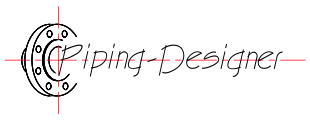Gravitational Torque
Gravitational Torque Formula |
||
| \( \tau_g \;=\; m \cdot g \cdot r \cdot sin(\theta) \) |
||
| Symbol | English | Metric |
| \( \tau_g \) (Greek symbol tau) = Gravitational Torque | \(lbf-ft\) | \(N-m\) |
| \( m \) = Object Mass | \(lbm\) | \(kg\) |
| \( g \) = Gravitational Acceleration (See Physics Constant) | \(ft \;/\; sec^2\) | \(m \;/\; s^2\) |
| \( r \) = Radius (Distance from the Axis of Rotation to the Center of Mass of the Object) | \(ft\) | \(m\) |
| \( \theta \) = Angle (Angle between the Line Connecting the Center of Mass to the Axis of Rotation and the Direction of the Gravitational Force) | \(deg\) | \(rad\) |
Gravitational torque is the rotational force exerted on an object due to the pull of gravity, typically about a pivot point or axis. It's a concept in rotational dynamics and is particularly relevant when considering objects that are not free-falling but are instead constrained to rotate, such as a pendulum or a beam attached to a hinge.

